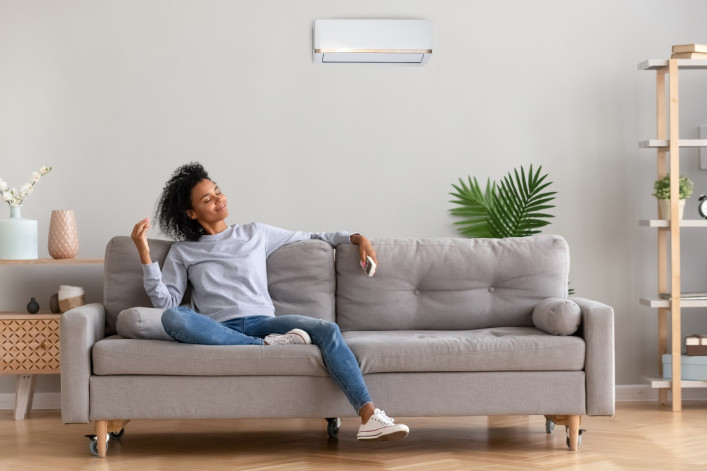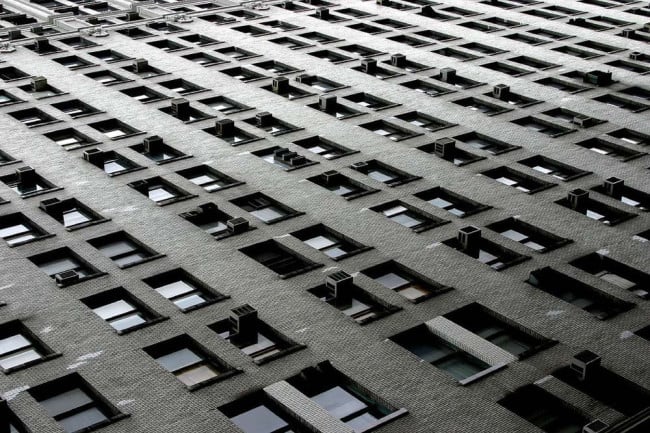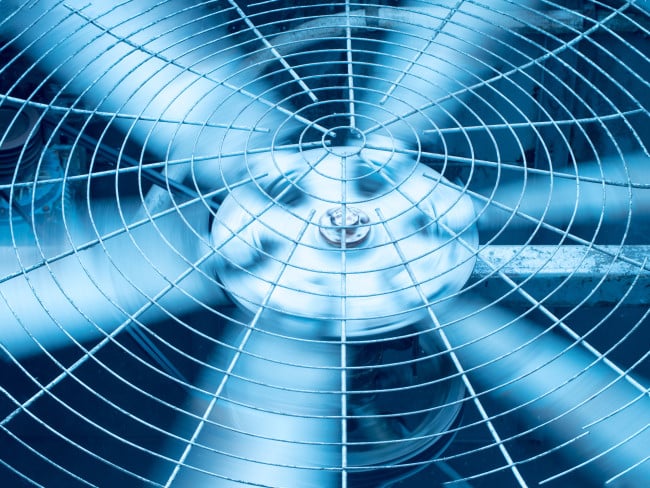How to keep your NYC apartment cool: In-window, through-wall, split unit, and other types of air conditioners

Need a way to cool your apartment this summer? Here's a breakdown of the most popular and best-selling air conditioners.
iStock
Summer 2022 is almost here and you may already be feeling the heat in your New York City apartment. If you need a new air conditioner to stay cool while you’re at home, now is the time to make your purchase before temperatures really rise.
How can you figure out which air conditioner works best for your apartment? There are lots of factors to consider, like how powerful a unit you need for the size of your apartment, your noise tolerance, and what type of appliance your building allows. Also be aware that like everything these days, prices are higher than last year for AC units.
To make it easier to find what you need, Brick Underground rounded up some of the best air conditioners on the market, including the highest-rated, best-selling units at Amazon, Home Depot, and Lowe's. We’ve also included some smart AC options if you're a techie or have a smart home.
Window units ACs
A window AC is probably the most common option for NYC residents—these are of course the dripping, noisy eyesores that stick out of apartment windows. Some people fear an AC will fall out of their window, and brackets are a common solution to this minor threat (if you live in a rent-regulated apartment, your landlord can't make you pay for that safety feature). You should also check into your building’s rules and the city’s window unit installation guidelines.
Still, window units are great for controlled cooling and usually the most economical option, with prices starting at around $200 for a unit that claims to cool a 150-square-foot room. Before investing in one, you’ll first want to find out if your building allows them. Landmarked buildings, for instance, frown on using them on the facade (but some people do it anyway), and some older buildings prohibit them if the electrical system can't support it.
You’ll also need to determine the type of unit that is best for your needs. Start by measuring the room where you will use it. Once you know the square footage, you’ll have a better sense of how powerful a model you’ll need (don’t forget to take ceiling height into consideration). Cooling capacities start at 5,000 BTU (British thermal units) per hour and can go up to 18,000 BTU for the typical apartment-sized cooler.
These are 115-volt units that can plug into a 120-volt outlet, which is standard for household voltage. If you purchase a stronger 230-volt unit, you’ll need to make sure your outlets can handle the extra voltage—if not, you’ll need an electrician to upgrade your wiring, which is not an inexpensive process.
According to Energy Star, the government program that certifies consumer products that meet certain standards of energy efficiency—you’ll also want to adjust for the following circumstances:
If the room is heavily shaded, reduce capacity to 10 percent.
If the room is very sunny, increase capacity by 10 percent.
If more than two people regularly occupy the room, add 600 BTU for each additional person.
If the unit is used in a kitchen, increase capacity by 4,000 BTU.
Consider where you install the unit. If you are mounting an air conditioner near the corner of a room, look for a unit that can send the airflow in the right direction.
Energy Star-certified appliances are more efficient than required by government standards, especially important now since you’ll likely be in your apartment more this summer. And check the energy efficiency ratio, or EER, (which measures the BTU in proportion to the input in watts) of each model. This tells you how well the appliance will operate when the temperature outside reaches 95 degrees or more. The higher the EER rating, the more efficient the AC.
Here are a few models to consider, arranged by lowest BTU to highest. Prices are accurate at time of publication.
Frigidaire window-mounted AC, Amazon, $209
This 5,000 BTU unit is the best-selling model on Amazon, and is ideal for a 100- to 250-square-feet room. It has a four-and-a-half star rating with 1,202 customer reviews. It’s Energy Star certified and has a dBA of 50.
Midea, Amazon, $358
This 8,000 BTU unit is Wirecutter’s pick for the best air conditioner and is an Amazon’s Choice based on high reviews. Its U-shape allows the compressor to be outside so your window blocks the noise, outputting as low as 42 dBA (the measure of the intensity of sound), according to the manufacturer. It’s Energy Star certified and wifi compatible, so you can control it from your Alexa, Google Assistant, and iOS and Android devices.
Frigidaire, Lowes, $390
This 10,000 BTU unit has a four-and-a-half star rating with 581 reviews on Lowes.com. It cools a room of up to 450 square feet and has three fan speeds and programmable time. It’s also Energy Star certified and has an energy saver mode. It comes with a remote control.
July, $479 and $529
July is a new company founded by two New Yorkers who want to make ACs that are environmentally friendly and easier to deal with—and sell directly to consumers. The first product drop is sold out but you can reserve a unit for $50 with guaranteed delivery in July 2022. Their medium units put off two-thirds less emissions and use 10 percent less energy than other ACs—and a tree is planted for every AC sold.
They send an expert to install it and will recycle your old AC unit for you. The smart AC can be controlled by an app—or your voice. There are two sizes: 6,000 BTU that cools a room of up to 250 square feet and 8,000 BTU that cools a room of up to 350 square feet.
Windmill, $365 and $415
Windmill is an offshoot of a NYC-based air conditioner company that has been owned and operated by a family for three generations. Their goal is to offer modern air conditioners that are quiet and energy efficient.
The smart AC has a 6,000 BTU model that cools up to 250 square feet and a 8,300 BTU unit for spaces up to 350 square feet. The units have dual filtration to improve your space’s air quality and feature app and voice control, three cool settings, three fan speeds, and double-insulating side panels.
You can customize your AC with carbon filters and Windmill invests in tree protection projects to offset carbon emission produced by air conditioners. In NYC, Windmill offers professional installation and will even recycle your old unit.
Through-the-wall AC units
Similar to window ACs, these units are set into an opening cut into the exterior wall, usually beneath a window, and sit in a sleeve (metal or plastic) that holds them in place.
They function like window ACs in that they are designed to cool individual rooms, but that doesn’t mean you can go ahead and buy a window AC to place through your wall. According to Wirecutter, the vents on a typical window unit aren’t positioned to breathe properly in a standard wall sleeve, and will burn out the compressor. Also, unless your building already permits through-wall units, good luck trying to convince them to make an exception for you.
When looking for a through-the-wall AC, the same guidelines apply as window ACs for determining what you need. One exception: With window units, you need to measure the width of your window before making a purchase; wall units require you to also measure the dimensions of the sleeve in which the air conditioner will sit. Read here for more on through-the-wall units.
Here are some of the top-selling models arranged by lowest BTU to highest.
Keystone, Home Depot, $630
This 8,000 BTU through-the-wall unit is top rated on Home Depot with a four-star rating based on 264 reviews. The Energy Star-rated unit has cooling and heating (4,200 BTU) with an EER of 9.6. There are three cooling modes and three fan speeds plus energy saver mode. It comes with a roommate but the wall sleeve must be purchased separately.
Koldfront, Amazon, $589
This 10,000 BTU model is the top seller for through-the-wall units on Amazon with four and a half stars from 101 customer reviews. It cools a room of up to 450 square feet and has an EER 10.6. It comes with a remote, but you have to buy the wall sleeve separately, which is available on Amazon for $119.
LG, Lowe's, $570
This 11,800 BTU model is Lowe’s best-selling through-the-wall air conditioner. It has four stars based on 121 reviews. It’s Energy Star certified and can cool a room up to 550 square feet. Its EER is 10.6 and it has three cool and three fan speeds. It comes with a remote control, but not a wall sleeve.
Ductless mini split-system ACs
You may see the phrase “split units in bedrooms” in rental listings. What this means is that each room has its own ductless mini-split AC. They’re often mounted high up on a wall so they’re less of an eyesore, and are connected to an outdoor compressor. So if you want to install one in your co-op or condo, you will need to get board approval.
These are good options if you can’t install central air. Hook-ups between the outdoor and indoor units generally require only a three-inch hole through a wall for the conduit, and multiple units can be connected to a single compressor. They’re small, relatively quiet, and can be used for cooling (or heating) individual rooms. The number you’ll need depends on the number of rooms you want to cool. You’ll also need to have the units professionally installed.
Because these units heat as well as cool, they get a SEER rating, a seasonal energy efficiency ratio, as opposed to an EER. This is determined by dividing the total electric energy input by the annual cooling output. As with an EER, the higher the rating, the more efficient the model will be. For more on the pros and cons of these systems, check out energy.gov.
Here are two popular options:
Pioneer, Amazon, $818
This 9,000 BTU unit is one of the best-selling split systems on Amazon with four and a half stars based on 2,867 customer reviews. Its SEER is 19.5. It has air conditioning, heating, dehumidification, and ventilation. The unit comes with an installation kit, remote control, and tech support for five years.
MrCool, Home Depot, $1,497
This 12,000 BTU unit is a best seller at Home Depot. It has 4.7 stars based on 473 reviews. The Energy Star-rated unit has an SEER of 22 and has three fan speeds. It can be controlled with the MrCool app, Google, and Alexa. An installation kit is included and it comes with a five-year parts warranty and seven-year compressor warranty.
Packaged terminal air conditioner (PTAC)
A PTAC sits along a wall, usually beneath a window, and often combines cooling and heating functions into one unit and you have probably seen them in hotels. They look similar to an enclosed radiator with vents at the top. They usually come with a 230-volt cord, so if you are installing one, make sure your apartment is properly wired for it.
PTACs are typically installed when a building is constructed and are hooked up to its hot water system. The hot water produced by the boiler flows into the PTAC and circulates the resulting heat into the apartment. There’s a separate chamber containing coolant that produces cool air. They are vented to the outside through a cutout below the window, usually covered with a metal grill, similar to a through-wall AC.
PTAC units are a little more expensive than through-wall units, but the cost to run them is about the same. Read here for more on the pros and cons of PTAC systems.
Here are two options:
Amana, Home Depot, $1,195
This 9,000 BTU unit is a best seller at Home Depot with four and a half stars based on 39 customer reviews. It’s energy efficient with an EER of 11.7 and features a dehumidifier, two fans, heat, reusable filters. A wall sleeve, drain kit, and grille are required and sold separately.
Cooper & Hunter PTAC with heat pump, Amazon, $1,069
This 15,00 BTU unit is Amazon’s Choice for PTAC air conditioners with four and a half stars from 81 customer reviews. It has heat, cool, and fan settings, three fan speeds, plus a seven-year limited warranty for the compressor and a five-year limited warranty on parts. A sleeve and grill are required and sold separately.
Portable ACs
These units should be considered a last resort if your building doesn’t let you use window units or allow through-wall installation. They aren’t as efficient as other types of units, so they don’t cool as well, and they can be more expensive. Plus, they take up valuable floor space and you still have to mount a hose out of the window to use it.
But these units are a good option if you don’t want to take up valuable window space with an AC—like this writer who loves her portable AC unit despite its many quirks. (Tip: You have to drain it and clean the filters.) She’s sensitive to loud noise and says it makes a “soothing fan noise” unlike larger AC units.
Should you have to go this route, Consumer Reports recommends that you install it correctly, get a fan to help move the air around, and block the sun from coming into the room where you’re using the unit.
Here are two options by cooling size:
LG, Home Depot, $339
This 6,000 BTU portable AC is a best seller at Home Depot. It has four stars based on 496 customer reviews. It cools up to 250 square feet and features two cooling and fan speeds, and a dehumidifier. The filter is removable and washable. A remote and window venting kit are included.
Midea, Lowe’s, $599
This 10,000 BTU unit is Wirecutter’s pick for the best portable air conditioner for its self-contained dual hose setup and powerful compressor. It also has a five-star rating at Lowe's. It cools up to 450 square feet with three speeds and has an oscillating feature. And it’s wifi compatible so it can connect to Alexa, Google, and its own app. A remote is included.
—Earlier versions of this article contained reporting and writing by Donna M. Airoldi































